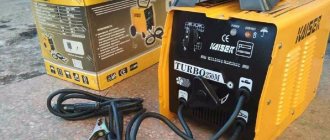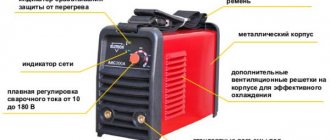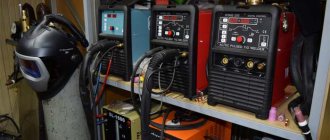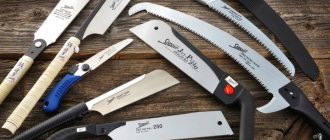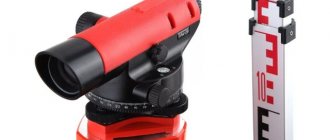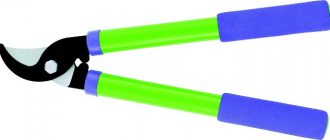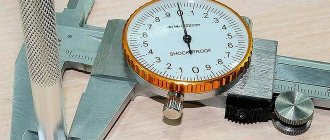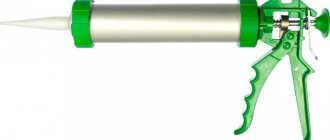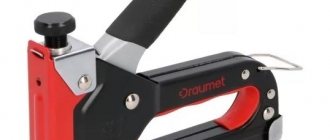After purchasing an inverter, it turns out that the welding cable included in the kit is inconvenient for welding in remote places due to its short length. Therefore, the missing meters will have to be purchased. To ensure that the cable does not degrade the parameters of the equipment and is convenient for operation and transportation, you need to know what criteria to choose it by.
Requirements for welding cables
To confidently select a welding cable, it is useful to familiarize yourself with the requirements that apply to it:
- It is unacceptable for defects to appear on the insulation after repeated bending and winding/unwinding during transportation;
- the outer shell must be resistant to petroleum products, shock and bursting loads;
- the conductor connected to the holder must be as flexible as possible so as not to interfere with the work;
- insulation should not crack in the cold or from ultraviolet radiation;
- To ensure that the welding wires do not overheat during operation, their cross-section must be sufficient for welding at the maximum current supplied by the device.
Suitable cable brands and types
The most popular option for a welding machine is the KG cable; it is a flexible single-core cable with a stranded core in rubber insulation. COG is also popular - with increased flexibility. There is also a specialized KS, these are the main brands of conductors that are used for welding work.
The title may also contain a note about the performance:
- T – tropical version, can operate at ambient temperatures up to +50 (according to some sources 85) degrees Celsius.
- KX or HL - frost-resistant, works even at -60 degrees Celsius.
And also the prefix P - an additional sheath of the core made of polymer materials.
The numbers in the marking indicate the number of cores and their cross-section, for example: KG 1x16 indicates that it consists of 1 core with a cross-sectional area of 16 square meters. mm.
Types of cables
Depending on the number of cores, welding cables are classified as:
- Single-core, made of thin copper wire collected in a bundle. Used for portable devices used for electric arc welding.
- Twin-core ones are used to connect the anode and cathode when carrying out pulsed welding with high frequency current and cutting workpieces.
- A three-core welding cord is needed for high-quality welding of pipeline joints in automatic mode and applying jet seams.
How to choose welding wires
Welding wires are divided into single-core and stranded. The first type assumes the presence of one common core instead of several cores divided into strips.
Stranded wires are used in industrial equipment with a current carrying capacity of more than 500A.
- Welding wires are divided into aluminum and copper. Most welding machines come with cables with aluminum cores due to their low cost.
- They are enough for irregular operation of the welding machine. However, experienced welders always use cords with copper cores, since copper is 7 times better at transmitting electric current than aluminum.
Important! Chinese copper wires are not really copper. Typically the core contains no more than 70% Cu. If you cut such a wire, the wires will be dimmer than usual. Suitable for household tasks, but not recommended for industrial purposes.
The diameter of the cable depends on the total amount of wire inside and its thickness. The cross section is selected depending on the power of the equipment and the welding current used in it. For larger values, appropriate wire diameters are required, otherwise the cable will not be able to transmit the entire required welding current.
To avoid loss of current, use the following table:
| Amperage, A | Wire diameter, mm2 |
| Up to 100 | 1x6 |
| Up to 150 | 1x10 |
| Up to 180 | 1x16 |
| Up to 250 | 1x25 |
| Up to 300 | 1x50 |
| Up to 400 | 1x100, 11x50 |
| Up to 600 | 1x120, 11x95 |
| From 600 | 1x185 |
Characteristics and markings of the welding cable
Stores sell various brands of welding cables designed for specific operating conditions. Some can withstand extreme cold, others heat, and there are some that can work underwater. To choose the right option, you need to study their characteristics.
The KRTP cable with flexible stranded copper cores is intended for mobile devices used for manual welding. The letters mean it is a rubber insulated, heavy, portable cable. The numbers at the end of the designation indicate the number of conductors and cross-sectional area. If they are different in thickness or there is a grounding conductor, the marking is made multi-link.
The previous brand, which is being discontinued, is replaced with a flexible welding cable KG. The number of conductors and cross-section are indicated by numbers. Additional letters are used to designate the version:
- HL - indicate that you can work at temperatures down to -60⁰C. The coating material will not crack in the cold.
- T - means that the insulation is made of antiseptic material on which fungus and mold do not settle. The cable can be used in environments with high humidity at temperatures up to +55⁰C. Some sources indicate values up to +85⁰C.
- N - placed on wires with non-flammable insulation, recommended for work in fire hazardous conditions.
- A prefix in the form of the letter P is added if the core is separately insulated with a polymer material, for example, PVC film.
- The designation of high-frequency wires is supplemented with the letters HF. This option is recommended for working with an inverter.
Types and purpose of welding cable
The welding cable is connected to a direct or alternating current source on one side, and to the electrode holder and ground clamp +85 °C on the other. Based on process requirements, it can be used in a wide variety of conditions.
Its main parameters are:
- ability to withstand various mechanical loads and damage, stretching, compression, bending;
- resistance to temperature changes;
- resistance to radiation in the ultraviolet spectrum;
- resistance to fungal and mold spores;
- corrosion resistance.
Several main classes of cable are widely used. They are divided according to cross-section, number of cores and climate class.
Don't miss: How to lay cable under the road and what requirements you need to consider. Laying cables in pipes: types and features of pipes, installation technology
Based on the number of cores there are:
- Single-core. The conductor is made of copper wire, which has excellent conductivity and ductility. This provides flexibility for repeated winding/unwinding. Widely used in small-sized mobile inverter devices.
- Twin-core. Two insulated conductors - cathode and anode - allow operation with high-frequency alternating current. They are made from special alloys of copper and other metals.
- Three-core. Designed for automated welding systems for connecting pipelines and pressure vessels.
Three-core cable
The use of various insulating sheaths allows us to produce welding cables in different climatic versions:
- Tropical (KG-T). The wire can operate up to +85 °C and at high humidity. Antiseptic impregnation protects it from bacteria and spores of fungi and mold. In tropical conditions, conventional welding wires do not hold up well and may break.
- Cold-resistant (KG-HL). For insulation, special frost-resistant polymers are used that do not crack and retain elasticity in frosts down to -60 ° C
Single-core
This welding cable is made from copper wire, which is distinguished by its elasticity and flexibility. In addition, the distinctive quality of copper as a metal is known - it is an excellent conductor of electric current.
These types are usually used for compact portable inverter devices with low power and corresponding parameters of current strength and other technical indicators.
Twin-core
This configuration has a cathode and anode, which are excellent at conducting electrical current during pulse welding.
Most often, these wires consist of pure copper wire, although there are products made of copper alloys with the addition of other metals that conduct current well. But the base is copper in any case, this is an important condition.
Three-core
This type is produced for complex automatic welding equipment, for example, powerful pipelines for transporting oil, gas or their products. Such work is considered highly responsible with mandatory requirements for the formation of ideal welding seams.
The marking of wires contains all the technical characteristics of welding work, which greatly simplifies their selection for specific work:
- KS - the product can be used in various types of welding work.
- P - the product is covered with an additional layer of polymer material for additional protection of the conductor. If there is a number next to it, it shows the number of cores in the cable.
- HF – the product can be used at high frequency voltage.
There are other useful properties of welding wires. They have excellent resistance to high and low ambient temperatures with a wide range from -50°C to +50°C, they are resistant to moisture and other aggressive external factors.
Most often, welding wires for an inverter come together as part of a common package in modern welding equipment. But they can be purchased separately as consumables. In this case, you need to look for products with the same markings as they were originally.
According to their resistance to environmental conditions, all products are divided into two large groups:
- Tropical or antiseptic under the KG-T marking can withstand temperatures up to +50°C in combination with high humidity. In such conditions, there is a high risk of fungal mold or the proliferation of pathogenic microorganisms. If the braid is not specialized, it can easily become exposed in the heat of the desert or in the tropics.
- Cold-resistant or cold-resistant under the marking KG-HL. The polymer braiding in them is absolutely resistant to frost, so the wire does not freeze or crack in the cold down to -60°C, that is, in the harshest climates.
Selection of welding cable cross-section
Incorrect selection of cross-section leads to premature failure of equipment, short circuit, or operation will become ineffective due to increased duration of operations and increased energy consumption. If the cross-section of the welding cable from the machine is insufficient, increased current will be required to support normal welding mode. Therefore, when the arc is ignited, the overload protection will be triggered, and operation will become impossible. The table, which shows the dependence of the cross section on the current, will help you not make a mistake when choosing.
| Section, mm² | Current strength, A |
| 6 | 80 — 100 |
| 10 | 120 |
| 16 | 189 |
| 25 | 240 |
| 35 | 289 |
| 50 | 362 |
| 70 | 437 |
| 95 | 522 |
Welding cable length
To avoid any trouble with the inspector, when extending the welding wire, it should be taken into account that, according to fire safety rules, it should not exceed 40 m in length. Officially, lengthening the wires is not prohibited, however, along with it, the resistance of the wire increases, to overcome which you need to configure the device for maximum loads. This mode of operation quickly wears out the equipment.
To ensure that the resistance value of the cores remains unchanged, the cross-section is increased. When lengthening the wire by 2 times, the cross-section will also have to be doubled. At the maximum length of the welding cable, taking into account the increase in cross-sectional area, its weight may become greater than that of the inverter. For welding small metal structures, 5 - 10 m is enough. If this is not enough, the device is connected to the mains via an extension cord.
Welding cables are connected to each other in several ways:
- Twists are easy to perform and quite reliable, but extending wires in this way is prohibited by the rules for installing electrical installations. The exception is when they are incorporated into other connection technologies. However, the ban does not prevent many welders from using them. For reliable contact, the ends of the wires, cleared of insulation, are treated with a solvent and then sandpaper before twisting.
- A male-female connector is convenient for quickly extending cores to the desired length from several parts. The stores have a large selection of designs and sections.
- Small cross-sectional conductors are connected by hot soldering. Their ends are cleaned to a shine, tinned, twisted, and crimped with pliers. To protect against oxidation, rosin or flux is applied to the surface. Depending on the cross-section, the twist is heated with a soldering iron or torch. Solder is added to the burner flame or on the soldering iron tip, filling the gaps between the wires. After cooling, the remaining flux is washed off.
- Crimping is performed using sleeves made of the same material as the cable (copper or aluminum). They are put on twists and crimped with pliers.
- A reliable connection is made by contact, gas, thermite welding. In the first case, the cores are fused after heating with an arc created by a carbon electrode. Gas welding is used to connect only solid aluminum conductors with a cross-section of no more than 20 mm². Thermite welding requires special cartridges.
Wire for connecting to the network
To power any device, a wire of the same cross-section as the welding cable is not required, since the current value is several times less. The set of household inverters includes a multi-core flexible cable with a cross-section of 2.5 - 4 mm² and a length of 3 - 5 m. For a grounded socket, it must have three cores.
If the socket is located far away at the work site, the device is connected through an extension cord with a cross-section of at least 2.5 mm², provided that the distance does not exceed 20 m. For a length of up to 60 m, it is better to take a carrier with a coil with a cross-section of 4 mm². To connect three-phase equipment in production, a power cable with four copper cores with a cross-section of 4 - 6 mm² is used, for aluminum - no less than 16 mm².
The recommendations given will help you make the right choice. However, welding cables are expensive, so before going to the store you need to determine exactly what length and cross-section you need. Why buy extra if it won't be used.
